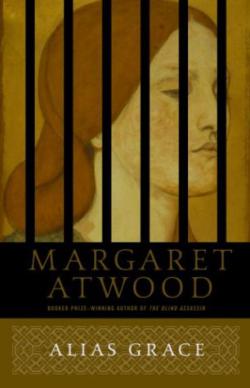Serendip is an independent site partnering with faculty at multiple colleges and universities around the world. Happy exploring!
Grace Marks, Celebrated Murderess

This summer I read a novel by Margaret Atwood called Alias Grace. It is based on the “celebrated murderess” Grace Marks a maid in Canada who was arrested for aiding and abetting the murder of her employer and the housekeeper in 1843. The novel is largely told from the point of view of both Grace and a doctor who listens to her in his study of criminal behavior, and in this way we hear her version of the story. The way Atwood retells it, Grace Marks is portrayed as someone who, not only suffered from poverty, a physically and emotionally absent mother, and an alcoholic and abusive father; she also was a victim of circumstances and was used by the farm hand who was hanged for the murd
er of the master of the house. Grace was to be hanged until her lawyer was able to convince the jury that she was emotionally unstable, when her sentence was changed to life in prison. Much of the book details her 30 years spent in prison (some of which was in an insane asylum). I’m writing about this now because reading Prisoners of a Hard Life really reminded me of it. Though the examples given in this graphic novel/essay are from a completely different time period, it refers to the American (not Canadian) prison system, and most of the women are minorities while Marks was white, there are still many parallels between the stories. The women in Prisoners of a Hard Life were similarly taken advantage of and not given a chance. Both examples show how much one’s circumstances and social class play a role in incarceration. And both show the injustices of the legal/prison system. I’ve been thinking a lot about this but am having a hard time synthesizing all of my ideas on this topic, so I might write more about it in my journal entry.

I also want to say something about this picture, which is the front cover of the book. It is just a picture of Grace Marks, but the bars put in front of her are actually made cutting out strips of the picture. It makes me think of silence as blankness, and I have an image of her imprisoned by silence.
Normal 0 false false false EN-US ZH-CN AR-SA

